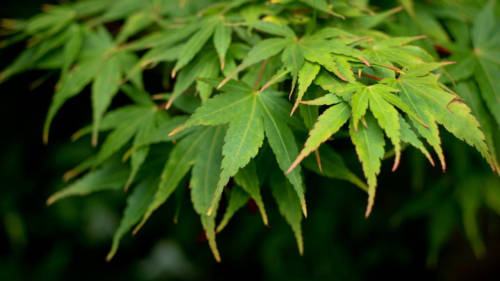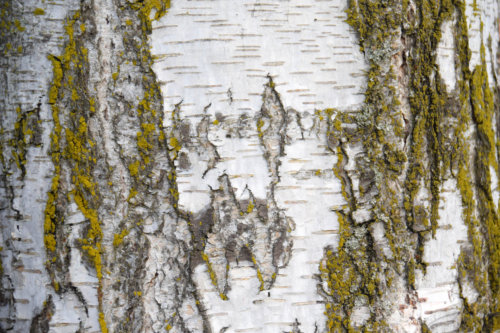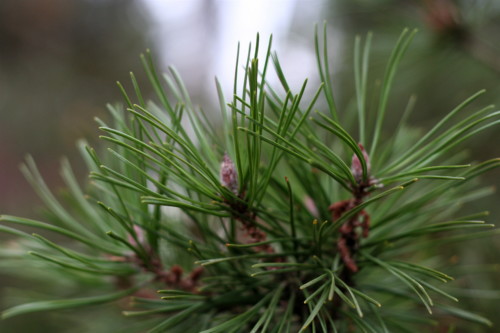How To Use Trees As Medicine
On a sunny Saturday morning, I walked into Flower Power, the revered Lower East Side herbal shop we visited last winter, for a workshop on “Trees as Medicine” with herbalist Kelly Hoffman. Though recent studies show that trees have immense healing effects, in a city like New York, applying this knowledge isn’t always easy.
Hoffman began by describing how trees can mirror parts of our cultural conversations in interesting and surprising ways. She told us about how England’s oldest tree underwent a sex change, giving us fascinating insight about the gender of trees. As a culture, the ways we rely on trees are manifold and cohesive: trees are food, paper, fuel, and fire. Because they’ve been on the earth for exponentially longer than flowers, for example, they bear a timeless resonance.
Hoffman’s particular focus was the qualities of the most basic trees, those we might overlook or take for granted– the ones in our backyards or in city parks, including maple, pine, linden, and oak.
As an herbalist, Hoffman began her fascination with trees and their healing potential when she started tapping maple trees. Determined to understand the medicinal qualities of maple sap, she stumbled upon a plenitude of them in the book A Modern Herbal, by Maud Grieve. Maple sap can be used as a moisturizer; it’s slightly sweet and filled with electrolytes. The bark is often used as an eye wash, and after birth to tone the uterus in folk medicine. An easy and poetic way to remember the right time to tap maple is that “it starts to run when the nights are freezing and the days are warm,” she explained.
Hoffman quickly realized other trees can be tapped too. The sap of Birch trees starts flowing as soon as maple sap stops. Birch is a “spring cleaning remedy”, known to represent newness, youth and vitality. It’s considered a “Russian leather”, and in the course of explaining this Hoffman shared the Russian proverb that “The birch gives us four good things—it provides light, it stifles cries, it heals the sick, and it purifies the body.” People often lightly beat their skin with birch in a sauna, which is a practice known for its cleansing effects.
As an herbalist, Hoffman’s knowledge is grounded both in first-hand observation, through spending long amounts of time in the woods, and in studying their mythology and the lore of trees.
Pine trees are another often overlooked tree– tall and straight, strong but light. So often used to scent cleaning materials, Pine trees are known for their antiseptic qualities. In our class, Hoffman introduced us to white pine, which has five spokes per bundle, and the red pine, which have two. Pine is linked to America’s logging industry, which in turn spurred legends like Paul Bunyan– though the tree is also linked to Pan, Bacchus, and fertility festivals. Because evergreens stay green in the winter, they’ve been linked to vitality and life force, and it has been said that bringing evergreen boughs into the home for winter not only represents the continuity of life, but also keeps bad spirits and illness away from the home. At this point in the lecture Hoffman passed around a pine bark, which she discovered makes a great incense when burnt– a clean substitute for Palo Santo. She found this out one day in the woods, when she came across a fallen pine tree and started contemplating ways to integrate uses of more common trees into the every day, rather than relying on our cultural preoccupation with the exotic and foreign.
Linden trees, Hoffman added, carry particular qualities attributed to opening up the heart. On the mythology of the Linden tree, she said, “The mother of the Greek centaur Chiron was turned into a Linden tree. Chiron, raised by Apollo, was a centaur (half man, half human) but was known for being civilized, intelligent, a philosopher, and master of medicine. He was mortally wounded and turned into the constellation of Sagittarius.” She served us tea made from linden flowers, and I was surprised to discover it had a very similar taste to honey: gentle, but undeniably sweet. “It’s hard to want to drink oak bark just for fun, but you could drink this stuff all the time,” she shared with us. I learned that pine needles can also make a wonderful tea simply by washing and steeping them in water– a new kind of healing that is easy to trace from forest to table.
Kelly Hoffman is an LMT based in Park Slope, Brooklyn– though she spends a lot of time in the forests of Southern Vermont and Massachusetts. In addition to her herbalism classes, she teaches courses on skin health, energetic healing, and medicine making. Find more information about Flower Power’s herbalism workshops here.






































